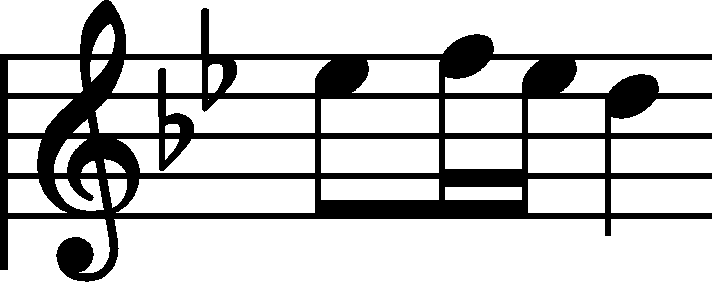



Issues : Main-line changes
|
b. 5
|
composition: Op. 10 No 1, Etude in C major
..
The b3 note on the last semiquaver of CLI and EE could be easily considered as a mistake except for the fact that in analogous bar 53 the sources have the same text. Therefore, it cannot be excluded that in CLI we are dealing with the original version, while in EE with the editor's revision. category imprint: Differences between sources issues: EE revisions , Errors in EE , Main-line changes , Errors of CLI |
||||||||
|
b. 5-6
|
composition: Op. 64 No 1, Waltz in D♭ major
..
A comparison of the versions of As and AI allows to assume an intermediate stage, in which the melody in these bars already had the form written in AI, yet still without the four-bar introduction without accompaniment. In AI, the introduction, appearing for the first time, has a form of a preview of the actual beginning of the theme, which simply repeats the first three bars. In the final version, the entire "run-up," in which the four-quaver, ostinato figure develops, is moved to the introduction, which consequently organically combines with the theme, without any caesura. category imprint: Differences between sources; Corrections & alterations issues: Main-line changes |
||||||||
|
b. 5-6
|
composition: Op. 28 No. 24, Prelude in D minor
..
The crossings-out visible in A allowed us to decipher the initial rhythm of b. 5: category imprint: Corrections & alterations; Source & stylistic information issues: Corrections in A , Deletions in A , Main-line changes |
||||||||
|
b. 6
|
composition: Op. 28 No. 21, Prelude in B♭ major
..
The crossing-out in A reveals the initial version of the beginning of this bar: category imprint: Corrections & alterations; Source & stylistic information issues: Corrections in A , Deletions in A , Main-line changes |
||||||||
|
b. 6-7
|
composition: Op. 63 No. 2, Mazurka in F minor
..
Chopin decided to publish bar 7 – together with the last quaver in bar 6 – in a changed version with respect to the notation of As. However, according to us, it is uncertain which version was earlier, since the notation of As suggests that corrections were being made to the first version:
If all the above assumptions proved to be true, it would turn out that it was the final version that was entered first (except the enharmonically equivalent notation of the 2nd quaver in bar 7, g1 instead of a category imprint: Differences between sources; Corrections & alterations; Source & stylistic information issues: Chopin's hesitations , Main-line changes |






 . According to us, it is likely that it was also the last a1 note in b. 6 that was initially a quaver – it is indicated by a denser notation, which points to a semiquaver rest having been possibly added, as well as by the difference in the shape of the flags next to that note, which would suggest that they were entered at different times.
. According to us, it is likely that it was also the last a1 note in b. 6 that was initially a quaver – it is indicated by a denser notation, which points to a semiquaver rest having been possibly added, as well as by the difference in the shape of the flags next to that note, which would suggest that they were entered at different times. .
. 1,
1, 1). Therefore, it would be a very clear example of Chopin's hesitation.
1). Therefore, it would be a very clear example of Chopin's hesitation.